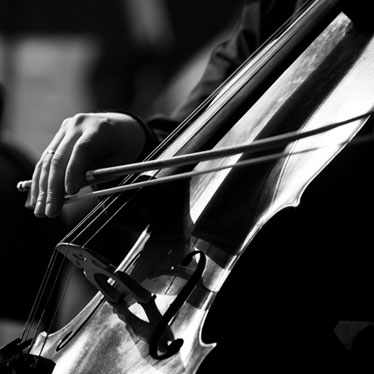What To Look For In A Cello Bow

There's a tremendous amount of information available on how to choose a cello, but equally important is the selection of a bow that makes those cello strings sing. It must be properly sized, in good shape, and should feel comfortable in your hand while you're playing.
We will outline some of the key things to look for while shopping for your cello bow. However, just like Harry Potter and his fellow magicians' quest for their personal wand, we recommend spending a decent amount of time trying different bows on your cello until you are 100% sure of your final choice.
For Beginners (and their parents)
If you're a beginning cellist, please avoid spending large sums on the highest-quality bow. This isn't necessary and will become a waste of your investment if you don't stick with the cello for any length of time, or - as often happens - you wind up migrating to another string instrument better suited for your musical calling.
Instead, purchase a bow that is well-made, but designed and priced for beginners. First and foremost, it should match the size of the player and the cello (4/4, 3/4, 1/2 and 1/4). The bow should have a reasonably strong and durable stick, and a nice curve - called a camber. Your teacher or staff at the instrument shop can help you with this.
The bow shouldn't be so heavy that it's difficult to wield, but it shouldn't be so light that excessive pressure is required to remain in contact with the strings. Also, the bow should have a nice balance. In two to three years, as your technical skills improve, you can upgrade to a bow that responds to your elevated technical acumen and more nuanced musical expression.
Note: If music store staff ever try to upsell or use high-pressure sales techniques, it's worth looking elsewhere since equipping you with the best, most reasonably priced options for your playing level is always the priority.
Select the Material
The stick of most bows is made from one of three materials; Pernambuco (a very expensive and increasingly rare Brazilian wood), carbon fiber, and other Brazilian hardwoods. There are also inexpensive fiberglass bow options. Fiberglass bows are very strong and very cheap - ideal for beginners. However, intermediate and advanced students prefer carbon fiber or wood bows, which produces better, overall sounds. Revelle’s Raven Bow is a good example of a carbon fiber bow, made for advancing students for a modest price.
You'll also have choices with regards to synthetic or natural bow hair, and this choice is up to your experience, budget, and playing preference. While natural bow hair is a traditional choice, musicians often prefer innovative synthetic options, like Coruss bow hair, that offer equivalent sound quality with increased durability and longevity.
Characteristics of a Cello Bow
When shopping for a new cello bow, you're ultimately evaluating your preferred version of the bow's four basic characteristics:
1. Weight
Most bows weigh between 2.3 ounces (65 grams) to 2.82 ounces (80 grams). That may not seem like much to a non-string musician, but tell that to your untrained hand when it's asked to handle the bow with proper technique for minutes on end.
If the bow is heavier, it requires more strength and control from the hand, wrist and forearm to maintain contact with the strings; exceedingly heavy bows grow quickly tiresome for all but the most advanced cellist. Interestingly, a bow that is light initially seems easier to manage but may strain a new player who hasn't mastered how to bow smooth, sustained notes without overexertion.
2. Balance
The center point of balance in a bow ranges from the tip-end to the frog-end of the stick. The former can require more control and a feeling of heaviness, while the latter can contribute to excess bounce and lack of control. Play with different bows to see, literally, which one strikes the right balance for you.
3. Strength and 4. Flexibility
Numbers three and four are combined since bow strength and flexibility are related. Stiffer bows can seem stronger and easier to manage, but the sound they produce may be weaker or thinner. More flexible bows require more expertise and finesse, but the sound will be richer and more responsive.
Tips for Testing Cello Bows
Now that you know the "what" of what you'll be evaluating, here are tips for testing bows to find the right one for you - a process that's somewhat akin to matchmaking.
- Don't look. Bows can be adorned and showy, but looks don't count. It's truly a case of, "don't judge a bow by its cover."
- Identify what you want. Before you shop, identify your goal - comfort, better sound, more agility, etc., and hold that goal as you test.
- How does it feel? In a perfect world, the bow should feel so comfortable in weight, balance and fit that it's like an extension of your arm.
- Discard "no-gos" quickly. If you get an instinctual, "no," honor that and put the bow aside, saving your "yeses" for the re-test pile.
It takes the right bow to create the right sounds from your cello so take the time to find your best bow.


